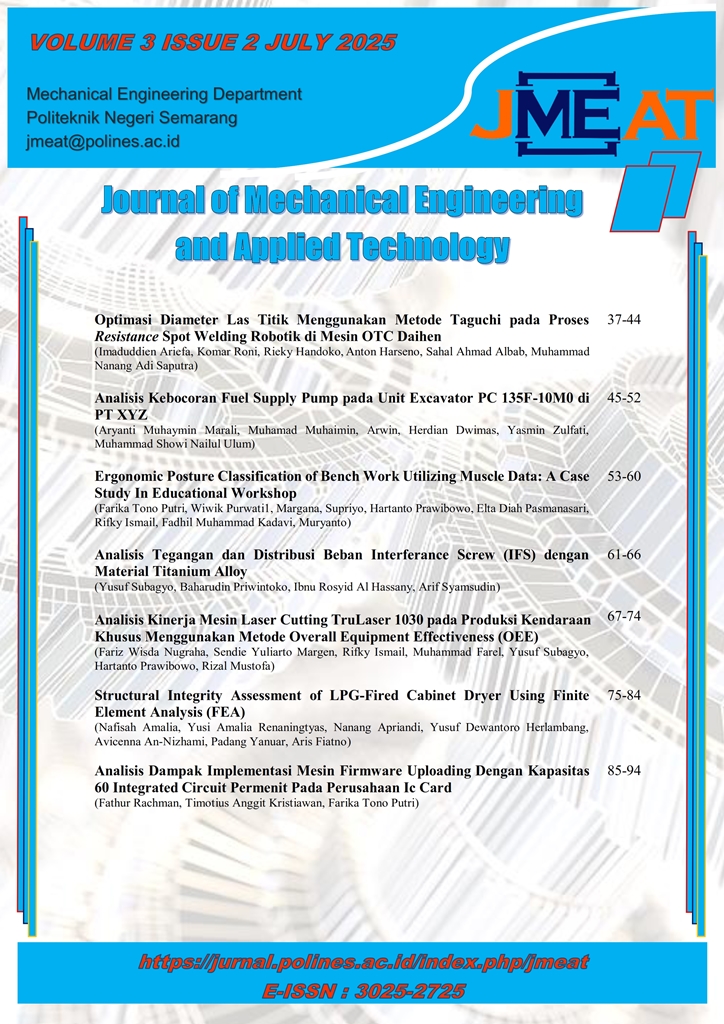OPTIMASI DIAMETER LAS TITIK MENGGUNAKAN METODE TAGUCHI PADA PROSES RESISTANCE SPOT WELDING ROBOTIK DI MESIN OTC DAIHEN
DOI:
https://doi.org/10.32497/jmeat.v3i2.6735Abstract
Robotic welding technology has become a key component in modern manufacturing, particularly in automotive industries, due to its ability to deliver consistent weld quality and improve efficiency. However, weld quality remains highly dependent on process parameters such as current (Ampere), voltage, electrode movement speed, and heat input. In the context of resistance spot welding (RSW), optimizing these parameters is essential to achieve ideal weld diameters and ensure joint integrity. Previous research has primarily focused on tensile strength, overlooking diameter as a crucial quality metric in precision manufacturing. This study addresses that gap by investigating the influence of four welding parameters—current, voltage, speed, and heat input—on weld diameter using the Taguchi method. An experimental design with L8 orthogonal array was implemented to reduce the number of trials while maintaining robust analysis. The quality characteristic "Smaller is Better" was used to align with industrial diameter standards of 15–16 mm. Signal-to-noise (SN) ratios and ANOVA were applied to identify the most influential factors. The optimal parameter combination was found to be current at 180 A, voltage at 18 V, speed at 80 cm/min, and heat input at 0.2 KJ/mm. Confirmation experiments yielded an average weld diameter of 15.8125 mm, validating the Taguchi prediction and demonstrating the method’s effectiveness in minimizing diameter variation. These findings confirm that all four parameters significantly affect weld diameter and that Taguchi-based optimization can effectively enhance weld quality and manufacturing efficiency
Downloads
Published
Issue
Section
License

This work is licensed under a Creative Commons Attribution-NonCommercial-ShareAlike 4.0 International License.
Authors who publish articles in this journal agree to the following terms:
The author owns the copyright and grants first publication rights to the Journal with work simultaneously licensed under a Creative Commons Attribution License which allows others to share the work with the work acknowledged and first published in this journal
Authors may enter into separate, additional contractual agreements for the non-exclusive distribution of the journal's published version of the work (for example, posting it to an institutional repository or publishing it in a book), with an acknowledgment of the first publication in this journal.
Authors are permitted and encouraged to upload their work online (for example, in an institutional repository or on an author's website) before and during the submission process, as this can lead to productive exchanges, as well as earlier citations and a larger number of citations of the published work. (See the impact of open Access).






